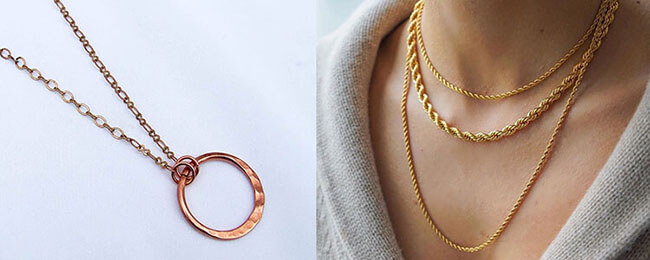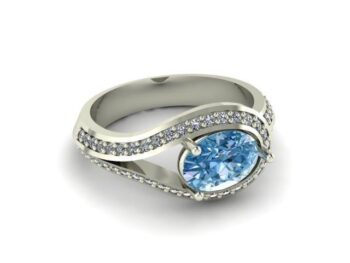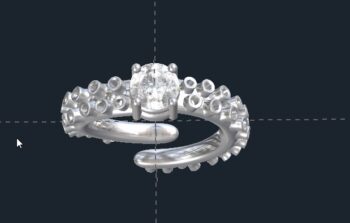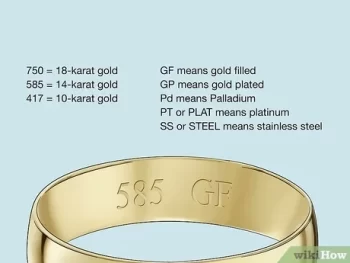Copper and Brass have both been used for jewelry for a long time. Their earthy and warm tones have made them some of the most popular metals in jewelry making. Especially with handmade jewelry. They are both durable and affordable as well. But, which is better in Copper Vs Brass? In this post, we will discuss everything about both metals. We will list their pros & cons, well as what they are not recommended for.
Copper Vs Brass – Copper
Copper is a versatile metal that has been used by humans for thousands of years. It is known for its excellent conductivity, making it a crucial material in various industries such as electronics and construction. Copper is also valued for its corrosion resistance and malleability, allowing it to be easily shaped into different forms. Additionally, copper is an essential nutrient for the human body, playing a vital role in various physiological processes.
In terms of its applications, copper is widely used in electrical wiring due to its high conductivity. It is also commonly found in plumbing systems because of its resistance to corrosion and bacteria. In architecture, copper is often used for roofing and cladding due to its durability and aesthetic appeal. Moreover, copper compounds are utilized in agriculture as pesticides and fungicides to protect crops from diseases.
From ancient civilizations to modern technology, copper continues to be a valuable resource with a wide range of uses. Its unique properties make it indispensable in various sectors, contributing to advancements in infrastructure, health, and innovation. Whether in the form of electrical wires, architectural elements, or agricultural products, copper remains a vital material that plays a significant role in our daily lives.
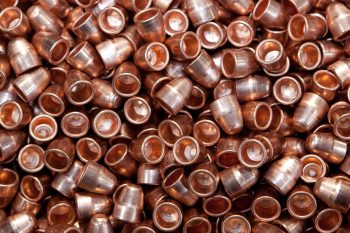
Copper Chemical Composition & Physical Properties
Copper is a versatile metal known for its excellent conductivity and corrosion resistance. Its chemical composition consists mainly of copper atoms, typically over 99%. Copper also contains small amounts of other elements such as oxygen, sulfur, and iron. These impurities can affect the metal’s properties, making it suitable for various applications.
In terms of physical properties, copper is a reddish-brown metal with a high thermal and electrical conductivity. It is malleable and ductile, allowing it to be easily shaped into wires or sheets. Copper is also known for its durability and resistance to corrosion, making it ideal for use in electrical wiring, plumbing systems, and architectural applications.
Overall, the chemical composition and physical properties of copper make it a valuable material in various industries. Its versatility, conductivity, and corrosion resistance have established copper as a crucial element in modern technology and infrastructure.
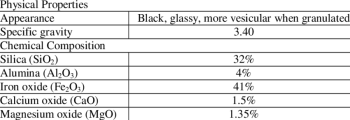
Copper Jewelry
Copper jewelry has been cherished for centuries due to its beauty and healing properties. This metal is known for its unique reddish-brown color that adds warmth to any outfit. Many people believe that wearing copper jewelry can help alleviate joint pain and improve circulation. Its versatility allows for a wide range of designs, from intricate filigree work to simple minimalist pieces.
One of the key benefits of copper jewelry is its potential health advantages. Some individuals wear copper bracelets or rings to reduce inflammation and pain associated with conditions like arthritis. The metal is also believed to stimulate energy flow and promote overall wellness. While scientific evidence is limited, many wearers swear by the positive effects they experience when wearing copper jewelry regularly.
In addition to its health benefits, copper jewelry is a stylish accessory that can complement any wardrobe. Whether you prefer a bold statement piece or subtle everyday wear, there is a copper jewelry design to suit your taste. From earrings and necklaces to bracelets and rings, the options are endless. Embrace the beauty and potential healing properties of copper jewelry to enhance your style and well-being.
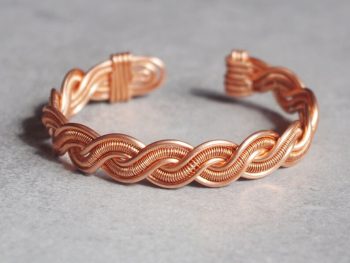
Copper Jewelry Durability
Copper jewelry is known for its unique reddish-brown hue and affordability. However, many people question its durability compared to other metals. Despite its tendency to tarnish over time, copper jewelry can last a long time with proper care. To maintain its shine, avoid exposing copper jewelry to harsh chemicals like perfumes and lotions, and store it in a dry place when not in use.
One way to protect copper jewelry from tarnishing is by applying a clear lacquer or wax coating. This can help prevent oxidation and keep the jewelry looking new for longer. Additionally, regularly cleaning copper jewelry with a soft cloth can remove any dirt or oils that may cause tarnishing. By following these simple maintenance tips, you can enjoy your copper jewelry for years to come.
In conclusion, while copper jewelry may require a bit more care than other metals, its durability can be maintained with proper attention. With regular cleaning and storage in a dry place, your copper jewelry can continue to shine and make a stylish statement. Embrace the unique beauty of copper jewelry and enjoy its longevity with these easy maintenance tips.
Pros & Cons Of Copper Jewelry
Copper jewelry is a popular choice for many due to its unique reddish-brown hue and affordability. One of the main advantages of copper jewelry is its versatility in design. It can be easily molded into intricate shapes and patterns, making it a favorite among artisans and jewelry designers. Additionally, copper jewelry is believed to have health benefits such as reducing inflammation and easing joint pain when worn against the skin.
On the downside, copper jewelry requires regular maintenance to prevent tarnishing. Exposure to air and moisture can cause copper to darken and develop a patina over time. This means that constant cleaning and polishing are necessary to keep copper jewelry looking shiny and new. Furthermore, some individuals may experience skin discoloration or allergic reactions when wearing copper jewelry, especially if they have sensitive skin or are prone to metal allergies.
In conclusion, copper jewelry offers a unique aesthetic appeal and potential health benefits, but it also requires regular upkeep to maintain its appearance. While some may appreciate the natural patina that develops on copper over time, others may find the maintenance involved off-putting. Ultimately, the decision to wear copper jewelry should take into consideration both its aesthetic appeal and the wearer’s skin sensitivity and willingness to maintain its upkeep.

Brass Vs Copper – Brass
Brass is a metal alloy made primarily of copper and zinc. It is known for its yellowish color, similar in appearance to gold. Brass is valued for its durability, malleability, and acoustic properties, making it a popular choice for musical instruments, decorative items, and plumbing fixtures.
One of the key characteristics of brass is its resistance to corrosion, making it a practical choice for outdoor applications. It is also easily machinable, allowing for intricate designs and detailed craftsmanship. Brass can be polished to a high sheen or left to develop a natural patina over time, adding to its aesthetic appeal.
In addition to its decorative and functional uses, brass has been an important material throughout history. From ancient civilizations to modern industries, brass continues to be a versatile and reliable alloy for a wide range of applications.
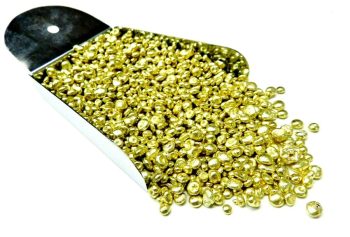
Brass Chemical Composition & Physical Properties
Brass is an alloy made primarily of copper and zinc, with varying compositions to achieve different properties. The most common type of brass, known as yellow brass, typically contains around 70% copper and 30% zinc. This composition gives yellow brass its characteristic golden color and makes it a popular choice for decorative applications. Brass can also contain other elements such as lead, tin, or aluminum in smaller amounts to further enhance its properties.
In terms of physical properties, brass is known for its excellent machinability, making it easy to work with in various manufacturing processes. It is also corrosion-resistant, which makes it suitable for outdoor applications or in environments where exposure to moisture is a concern. Brass has good thermal and electrical conductivity, making it a preferred material for components in electrical and plumbing systems. Additionally, brass is valued for its antimicrobial properties, which inhibit the growth of bacteria on its surface.
Overall, brass is a versatile alloy with a unique combination of properties that make it a valuable material in various industries. Its aesthetic appeal, durability, and ease of use make it a popular choice for applications ranging from musical instruments to plumbing fittings. Understanding the chemical composition and physical properties of brass can help in selecting the right type of brass for specific requirements, ensuring optimal performance and longevity of the final product.
Brass Jewelry
Brass jewelry has been a popular choice for centuries due to its durability and affordability. This metal alloy, composed of copper and zinc, offers a warm golden hue that resembles gold. Brass jewelry can be found in various styles, from intricate filigree designs to modern minimalist pieces, making it versatile for any occasion. With proper care, brass jewelry can maintain its luster and beauty for years to come.
To keep your brass jewelry looking its best, it is important to clean it regularly. A simple solution of warm water and mild soap can be used to gently scrub away any dirt or tarnish. Avoid harsh chemicals or abrasive materials that can damage the metal. Additionally, storing your brass jewelry in a dry place away from moisture can help prevent tarnishing and discoloration.
Whether you prefer statement custom earrings, bold fashion rings, or delicate customized pendants and pins, brass jewelry offers a wide range of options to suit your style. Its timeless appeal and budget-friendly nature make it a popular choice for both everyday wear and special occasions. Embrace the beauty of brass jewelry and add a touch of elegance to your accessory collection.
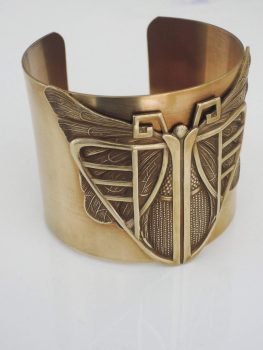
Brass Jewelry Durability
Brass jewelry is known for its durability and strength, making it a popular choice for accessories. The alloy of copper and zinc used in brass jewelry gives it a sturdy quality that can withstand daily wear and tear. With proper care, brass jewelry can maintain its shine and luster for a long time.
Overall, brass jewelry is a reliable option for those looking for durable and stylish accessories. By following simple maintenance tips and handling it with care, you can enjoy your brass jewelry for years to come.
Pros & Cons Of Brass Jewelry
Brass jewelry is a popular choice for many due to its affordability and durability. Its warm, golden hue resembles that of gold, making it an attractive option for those looking for a more budget-friendly alternative. Brass jewelry also tends to be more resistant to tarnishing compared to sterling silver, requiring less maintenance to keep its shine.
On the downside, some people may experience skin discoloration when wearing brass jewelry, as it contains copper which can react with sweat and oils on the skin. This can result in a greenish tint on the skin, especially for those with sensitive skin. Additionally, some individuals may be allergic to the metals present in brass, leading to skin irritation or allergic reactions when worn for extended periods.
Despite its drawbacks, brass jewelry remains a versatile and stylish choice for accessorizing various outfits. Its unique look and affordability make it a popular option for both casual and formal occasions. By understanding the pros and cons of brass jewelry, you can make an informed decision on whether it is the right choice for your accessory collection.
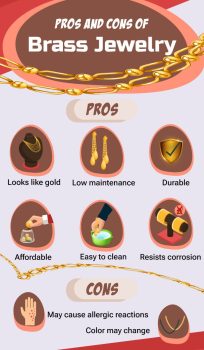
Copper Vs Brass Price
When considering the price difference between copper vs brass, it’s important to note that copper is generally more expensive than brass due to its higher value in the market. Copper is a highly sought-after metal for its conductivity and corrosion resistance, making it a popular choice in various industries. On the other hand, brass is an alloy of copper and zinc, which makes it more affordable than pure copper while still offering good durability and machinability.
Factors that influence the price of copper include market demand, supply levels, and global economic conditions. Copper prices can fluctuate significantly based on these factors, leading to price variations in the market. Brass, being an alloy, is usually priced lower than copper but can also be affected by changes in the prices of its component metals, copper and zinc.
In conclusion, while copper is generally more expensive than brass, both metals have their own unique properties and applications. Understanding the factors that influence their prices can help in making informed decisions when choosing between copper and brass for various projects or applications.
Copper Vs Brass – Which Do We Recommend?
When deciding between copper vs brass for jewelry making, both metals have unique qualities to consider. Copper is known for its reddish-brown hue and is more affordable than brass. It is a softer metal, making it easier to bend and shape. On the other hand, brass has a more yellowish tone and is a durable metal that resists tarnishing. It is a popular choice for jewelry due to its versatility and ability to mimic gold.
For those looking for a budget-friendly option with a warm tone, copper is a great choice for jewelry making. Its malleability allows for intricate designs and details. However, if you prefer a metal that is more resistant to tarnishing and has a brighter appearance, brass might be the better option. Brass jewelry can provide a luxurious look without the high price tag associated with gold jewelry.
Ultimately, the choice between copper vs brass for jewelry making depends on personal preference and the desired outcome. Both Copper Vs Brass offer unique characteristics that can enhance the beauty of your jewelry pieces. Whether you opt for the affordability of copper or the durability of brass, both metals can be used to create stunning jewelry that suits your style and budget.
